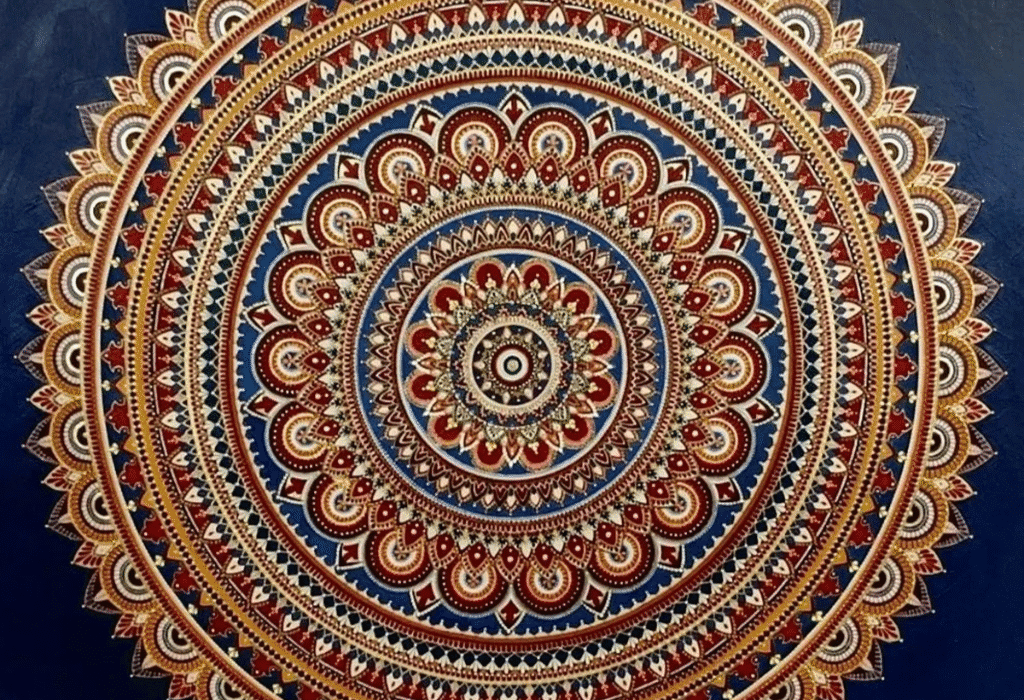
What is Mandala Art
Introduction
More than just a lovely circular pattern, mandala art is a profound representation of harmony, balance, and spiritual kinship. Mandalas are revered symbols of the cosmos in many cultures, particularly Buddhism and Hinduism. However, mandala art has also gained popularity as a means of self-expression and decoration in modern times.
This article will teach you the basics of mandala art, including its types, history, and applications for fostering creativity and tranquilly in your home and life.
What Does 'Mandala' Mean?
The Sanskrit word “mandala” means “circle.” It represents unity and wholeness. Usually round in shape, mandalas feature recurring patterns that radiate outward from the centre. They frequently stand for the cosmos, the individual, or a voyage from the outside world to the innermost self.
Key Features of Mandala Art
round in form
Patterns with symmetry
intricate patterns utilising lines, symbols, and geometric shapes
Frequently depicted with several layers flowing either inward or outward
The Origins and History of Mandala Art
Mandalas have been around for thousands of years. They initially arose in Buddhist rituals and ancient Indian texts. Sand mandalas, which were later destroyed to represent impermanence, were made by monks as spiritual art.
Tibetan, Chinese, and Japanese cultures all adopted mandalas as they spread throughout Asia. The Swiss psychiatrist Carl Jung used mandalas as a psychological tool in the modern era because he thought they reflected the inner self.
Different Types of Mandala Art
Mandalas come in various styles and meanings.
Here are the most common types:
1. Teaching Mandalas
Used in spiritual training to help practitioners focus during meditation. Each part has a symbolic meaning.
2. Healing Mandalas
Created for meditation and relaxation. These are commonly used in art therapy and stress relief.
3. Sand Mandalas
Tibetan monks create these from coloured sand. Once complete, they are ritualistically dismantled to represent the impermanence of life.
4. Nature Mandalas
Made with leaves, stones, flowers, and other natural materials. These celebrate nature and encourage mindfulness.
5. Geometric Mandalas
These features are repeated geometric shapes and are often used in home décor and art prints.
Mandala Art in Modern Design
Mandala designs are used extensively nowadays in:
- Home décor (textiles, paintings, and wall posters)
- Fashion (garments, attire)
- Digital artwork
- Ink
- Tools for mindfulness (colouring books, journals)
Mandalas are particularly well-liked in home décor with a spiritual theme and bohemian wall art collections.
Benefits of Mandala Art
Mandala art isn’t just decorative—it can have a positive impact on your mind and emotions.
1. Stress Relief and Meditation
Colouring or drawing mandalas is proven to calm the mind. The repetitive patterns help you stay present and mindful.
2. Enhances Focus
Mandalas promote concentration, making them ideal for both kids and adults needing a creativity boost.
3. Encourages Self-Expression
Each mandala is unique. Whether you draw or colour one, it’s a personal reflection of your inner world.
4. Spiritual Connection
Many use mandalas during meditation to center their thoughts and explore deeper awareness.
Tools You Can Use
- Markers or pens with fine tips
- ruler and compass
- Paints or coloured pencils
- Mandala stencils (not required)
Conclusion
There is more to mandala art than just striking designs. It stands for harmony, awareness, and individual development. Mandalas have something to offer everyone, whether you’re looking into their spiritual origins or want to make your walls look nicer.
